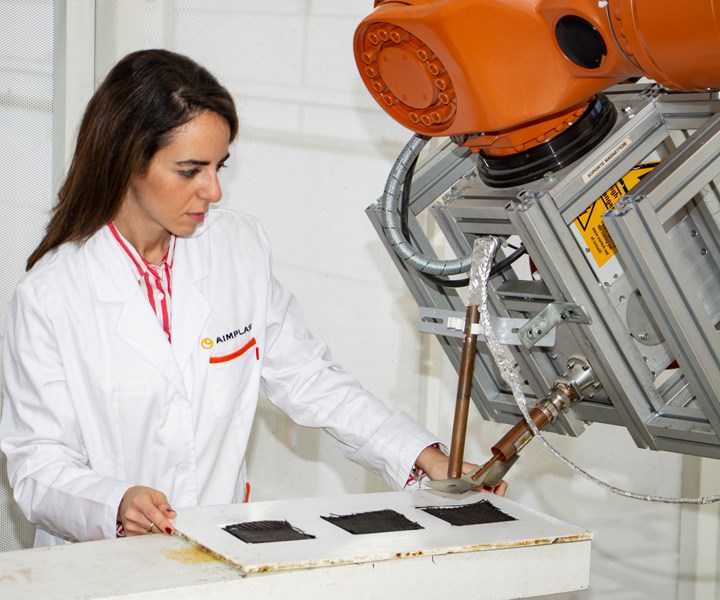FAMACOM project to develop more efficient manufacturing process for aerospace parts
The Spanish consortium, led by Aerotecnic, is using microwave curing for manufacturing large sandwich-structured composite parts.

Source | AIMPLAS
A consortium called FAMACOM, led by Aerotecnic (Cádiz, Spain), is developing a more efficient manufacturing process for lightweight aerospace parts, using microwave curing for manufacturing large sandwich-structured composite parts. Partners in the consortium include CT Ingenieros Andalucia, Inespasa (Seville, Spain), Titania (Cádiz, Spain),​​​​​​​ and researchers from Universidad de Cádiz, FADA-CATEC (Seville, Spain), and AIMPLAS (Valencia, Spain).
The project research will reportedly is developing a patent that will enable even curing of sandwich-structured parts and overcome difficulties arising from the thickness and non-uniform nature of these assemblies. AIMPLAS’s contribution focuses on material selection and optimization of the microwave curing process.
FAMACOM is funded by the Centre for the Development of Industrial Technology (CDTI) with the support of the Spanish Ministry of Science, Innovation and Universities and the European Regional Development Fund (ERDF). The objectives of this project are aligned with the Factories 4.0 and Beyond strategy, as well as with the Societal Challenge on Smart, Green and Integrated Transport, which forms part of the National Plan for Scientific and Technical Research and Innovation for 2017-2020.
Related Content
-
Plant tour: Airbus, Illescas, Spain
Airbus’ Illescas facility, featuring highly automated composites processes for the A350 lower wing cover and one-piece Section 19 fuselage barrels, works toward production ramp-ups and next-generation aircraft.
-
Carbon fiber, bionic design achieve peak performance in race-ready production vehicle
Porsche worked with Action Composites to design and manufacture an innovative carbon fiber safety cage option to lightweight one of its series race vehicles, built in a one-shot compression molding process.
-
Active core molding: A new way to make composite parts
Koridion expandable material is combined with induction-heated molds to make high-quality, complex-shaped parts in minutes with 40% less material and 90% less energy, unlocking new possibilities in design and production.
.jpg;width=70;height=70;mode=crop)





